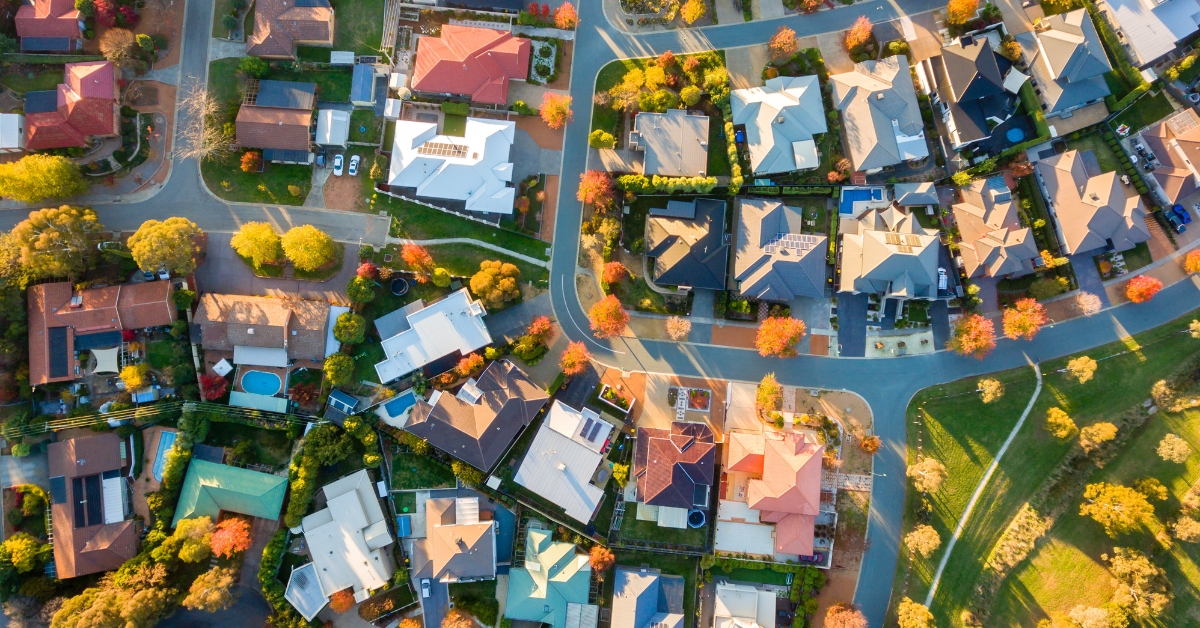The Evolution of Property Investment: Trends Shaping the Future

The property market in Australia has long been the benchmark of the nation’s economy, mirroring its economic growth and societal changes. As the national landscape evolves, so do Australian property trends.
As we look toward the future, the Australian property market is tipped to undergo changes shaped by technological advancements, global economic trends, and consumer preferences.
Here are a few of the Australian property trends that will shape property investment strategies for the upcoming generation of homeowners:
1. Sustainable developments and eco-friendly housing
Amidst growing concerns about climate change and environmental sustainability, there's a rising demand for sustainable developments and eco-friendly housing options. This heightened awareness has propelled homeowners to seek properties that minimise their carbon footprint and promote environmentally responsible living.
From energy-efficient design features to eco-conscious building materials, developers are increasingly incorporating sustainable practices into new construction projects. Additionally, existing homeowners are retrofitting their properties with green technologies and implementing environmentally friendly practices including the use of solar power, green walls, rainwater harvesting systems, and energy-efficient appliances.
As sustainability continues gaining prominence in the real estate market, properties with eco-friendly features will likely attract greater interest and command premium prices.
2. More Millennials
The landscape of the Australian property market is undergoing a significant transformation, driven by shifting demographics. Millennials, typically born between 1981 and 1996, represent the largest cohort in Australia and are now entering the property market as first home buyers.
Millennials are reshaping long-term real estate trends in Australia's major cities, where skyrocketing property prices have impacted housing options. Many Millennials prefer flexibility over committing to mortgages, opting for alternative investments like the share market. This preference drives demand for ‘Build to Rent’ apartments, ‘Build to Sell’ owner-occupier apartments, and alternative housing types like townhouses and terrace houses. As Millennials influence the market, developers are adapting to cater to their preferences, ushering in a new era of real estate dynamics.
3. Digital transformation and PropTech
Technology continues to have an impact on real estate transactions, where virtual tours, augmented reality, and artificial intelligence revolutionise how properties are marketed, sold, and bought.
The Australian property market is experiencing a boom in PropTech, with startups and established businesses leveraging technology to enhance efficiency and transparency. By leveraging advanced technologies like AI and blockchain, PropTech provides investors with better access to data, more streamlined transactions, and enhanced market transparency. This leads to more informed decision-making, reduced costs, and increased liquidity in real estate assets.
For example, the use of smart contracts in real estate transactions is expected to save $3.5 trillion in transaction costs by 2030, while blockchain-based real estate transactions are expected to account for five percent of all global real estate transactions by 2030.
4. High-density living
A growing population driven by migration alongside an ageing demographic will influence Australian property trends long-term. Already, the Australian housing market is witnessing a gradual shift towards densification.
Government initiatives, such as Victoria's Big Housing Build, are further accelerating this trend towards high-density living. With projects aimed at increasing housing supply, the available free space in cities is likely to diminish even further. This ongoing densification not only reflects the pressing need for more housing but also underscores the changing dynamics of urban living in Australia.
As cities become more densely populated, the real estate landscape is poised to evolve, with a greater emphasis on vertical living and compact housing solutions. This shift towards densification presents both challenges and opportunities for investors and homeowners, reshaping the way properties are developed, marketed, and utilised in the long term.
5. Rise in renters
The increase in property prices has led to lower rates of home ownership that is likely going to lead to a significant shift in the housing market dynamics. With the persistent challenges of housing affordability, particularly for younger generations, there's a growing trend towards lifelong renting rather than traditional homeownership.
Even when the market returns to normal affordable levels, the trend of tenancy will likely remain. This is because the barriers to homeownership extend beyond affordability alone. Factors such as changing lifestyle preferences, the desire for flexibility, and the allure of urban living contribute to the appeal of renting for many individuals and families.
Furthermore, the rental market has evolved to offer a wider range of housing options and amenities, catering to the diverse needs and preferences of renters. From luxury apartment complexes to co-living spaces and even ‘build to rent’ developments, there is now a plethora of rental options available to accommodate different lifestyles and budgets.
6. Different avenues to home ownership
Due to a competitive market, the next generation of homeowners are likely to explore other ways to get onto the property ladder. One notable shift is the growing popularity of innovative ownership models, such as fractional ownership and shared equity arrangements. These models allow multiple individuals to pool their resources and collectively invest in property, offering a more accessible entry point into the real estate market.
Additionally, cooperative purchasing arrangements, where friends or family members purchase property together, are gaining traction as a collaborative approach to homeownership. Fractional home ownership and shared equity arrangements are already a feature of the market, but down the road we may see the diversification of investment portfolios to include non-traditional property types alongside synthetic trading and property derivatives.
The future of property investment in Australia is being shaped by a multitude of trends. From the growing emphasis on sustainability and eco-friendly housing solutions to the rise of technological innovation through PropTech. Demographic shifts and the trend towards high-density living are redefining traditional notions of homeownership and driving demand for alternative investment models. Moreover, the emergence of novel ownership structure signifies a departure from conventional investment strategies towards a more out-of-the-box approach. As these trends unfold, the future of the Australian property market continues to reflect the changing dynamics of the broader economy and society.
DISCLAIMER - The information provided is for guidance and informational purposes only and does not replace independent business, legal and financial advice which we strongly recommend. Whilst the information is considered true and correct at the date of publication, changes in circumstances after the time of publication may impact the accuracy of the information provided. LJ Hooker will not accept responsibility or liability for any reliance on the blog information, including but not limited to, the accuracy, currency or completeness of any information or links.



